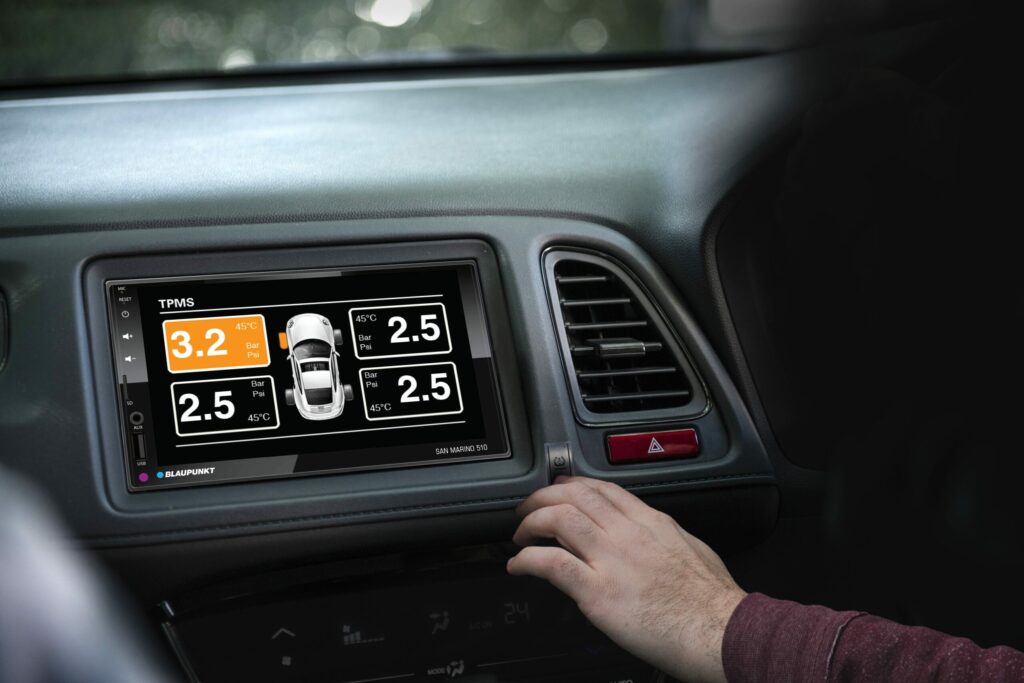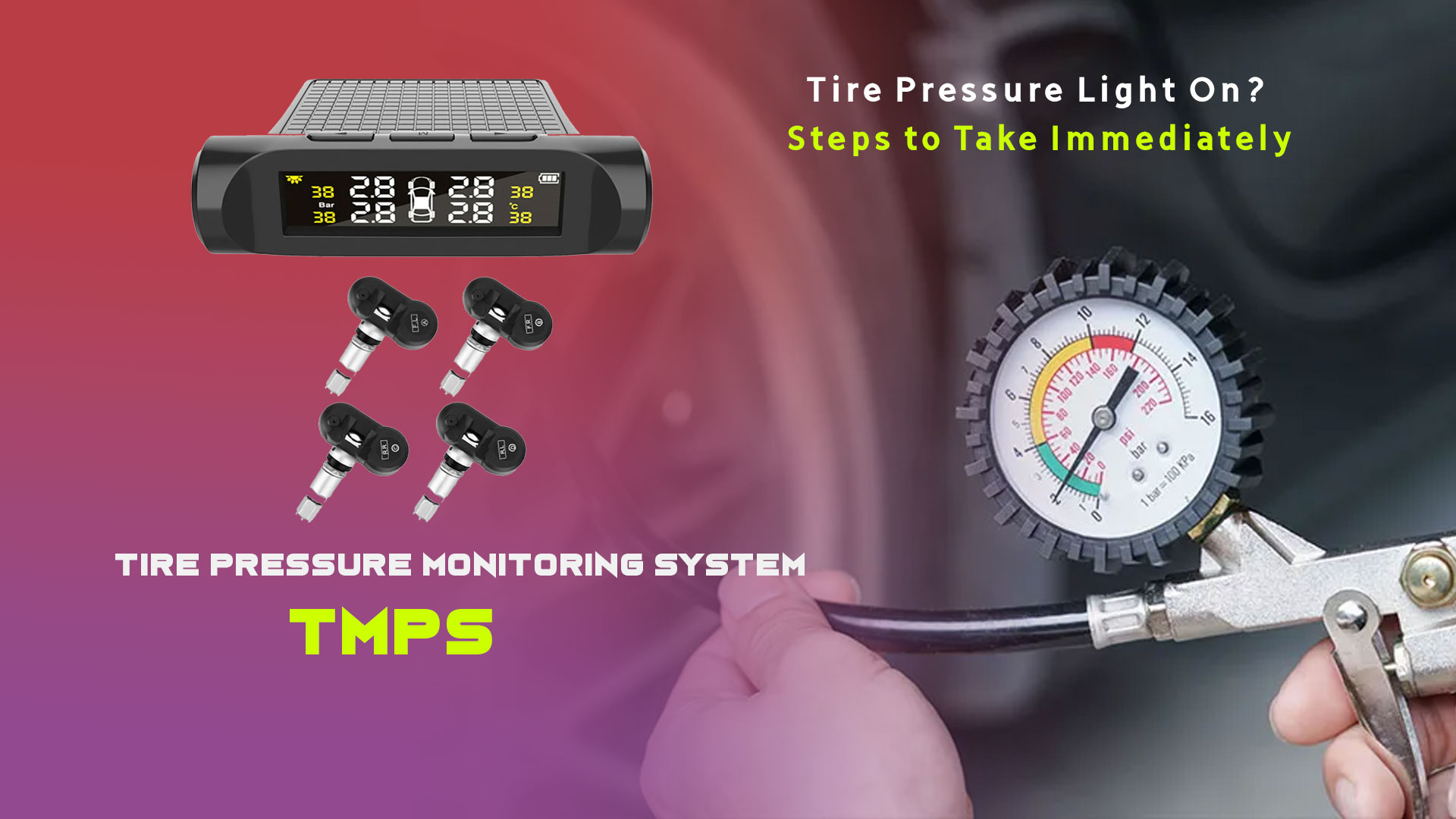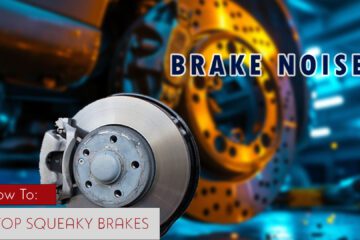Have you ever been driving along when suddenly the tire pressure light on your dashboard illuminates? It’s an unsettling moment that prompts questions – what does the tire pressure light mean, and what should you do about it? Thankfully, understanding the tire pressure monitoring system (TPMS) and how to respond can help keep you safe on the road.
The TPMS light alerts you to one or more underinflated tires, a potential malfunction in the tire pressure sensor or monitor system itself, or other issues like changes in altitude or temperature affecting tire pressure. This guide covers why your tire pressure light or tire pressure monitoring system (TPMS) light comes on and the immediate steps to take, from checking pressures to inflating tires properly or seeking tire repair services if needed.
Understanding the TPMS Light (tire pressure light)
The Tire Pressure Monitoring System (TPMS) is designed to alert you when your vehicle’s tires are significantly underinflated, creating unsafe driving conditions. Here’s what you need to know about understanding the TPMS tire pressure light:
What is the Tire pressure monitoring system (TPMS) Light?

This little light, this tire pressure monitoring system (TPMS) light, well, it illuminates your dashboard to tell you one or more of your tires is low on air. Inside each tire is a sensor, which communicates with a display on the dash or a warning light if the pressure is too low as directed.
How Low Can I Go Before the TPMS Light Comes On?
The tire pressure monitoring system (TPMS) light goes on at about 25% below what the automaker recommends you run your tires at (usually around 30-35 PSI for passenger vehicles). Some cars with a touchy TPMS will sound alarms once you hit that pressure.
You May Also Check
Tire Speed Ratings: Unraveling the Mystery
When it comes to choosing the right tires for your vehicle, one crucial factor to consider is the Tire Speed […]
Why It Is Significant to Keep Proper Tire Pressure?
The fact that the right tire pressure is so important has several reasons:
- Safety: The underinflated tire could wear prematurely, have less traction, and suffer from potential tire failure, which might contribute to accidents. On-the-road
- Performance: Better handling, breaking, fuel efficiency from rubber on the road.
- Tire Wear: Wearing your tires down sooner by underinflating or overinflating them causing wear life
While overinflated tires are just hard, underinflated ones give up their shape and squish against the road, which increases rolling resistance, reduces fuel economy and provides a less comfortable ride. Over-inflated tires have the opposite effect: traction is reduced and they wear in the center of the treadband far more quickly.
What To Do When The TPMS Light Comes On
When the TPMS (tire pressure monitoring system) light comes on, it is important to act quickly for your safety and to avoid possible tire failure. Here are the steps to take:
Tire Pressure Inspection
Start by inspecting the air pressure in all tires with a good tire pressure gauge. Find your recommended tire pressure number in the owner’s manual or on the sticker on the driver’s side door jamb. Check each tire’s pressure with the gauge and compare to the recommended pressure.
- If you have been driving for a while, park your car on a level area and let the tires cool down.
- Remove the valve cap from the tire valve stem by unscrewing it.
- Press the tire pressure gauge firmly onto the valve stem and read the pressure.
- Do this for all four tires including the spare, if available.
- Check the pressure of each tire with the gauge and compare to the recommended pressure. If any tire is 25% or more under the recommended pressure, inflate until it is at the correct level.
You May Also Check Breakthrough the Difference: Wheel Balancing vs Alignment
Resetting the TPMS System

Once the tire pressures have been set properly, you may need to reset the tire pressure monitoring system (TPMS) to dismiss the warning light. The procedure for resetting the TPMS varies by make and model so check your owner’s manual for details. In general, the procedures are:
- Find the TPMS reset button or tool. It is usually located under the dash or in the glove box.
- Turn the key to the “on” position but do not start the engine.
- Hold down the TPMS reset button or use the TPMS reset tool according to instructions.
- Release the button or complete the tool procedure according to instructions.
- Turn ignition off and restart the vehicle.
If the tire pressure light goes off after resetting, your tires are set. If the light stays on, you may have a bad sensor or other problems with the system which would require service.
You May Also Check
Focused on Tire Pressure Monitoring Systems (TPMS)
Introduction: Tire Pressure Monitoring Systems (TPMS) have evolved into essential safety components in contemporary vehicles. These systems play a critical […]
What If The TPMS Light Stays On While Driving?
If the TPMS light comes on while you are driving and you are unable to pull over immediately, it is advised to drive cautiously until you can inspect the tire pressures. But do not drive at high speeds or make sharp turns. Underinflated tires affect the vehicle’s handling and increase the risk of a blowout at any speed.
If the tire pressure monitoring system (TPMS) light flashes continuously or remains on after resetting, it may signify a system malfunction. In this case, have the TPMS inspected by a qualified technician as soon as possible. Until the issue is resolved, you won’t receive warnings about low tire pressure, so it’s essential to check the tire pressures regularly with a gauge.
Remember, the tire pressure monitoring system (TPMS) is designed to alert you to potential tire issues, but it’s not a substitute for regular tire maintenance. Heed the warning light and take appropriate action to ensure your tires are properly inflated for safe and efficient driving.
How Tire pressure monitoring system (TPMS) works?

The Tire Pressure Monitoring System (TPMS) is a crucial safety feature in modern vehicles. Let’s explore how it works:
- Types of TPMS:
- There are two main types of TPMS: direct (dTPMS) and indirect (iTPMS).
- Both types monitor tire pressure but use different methods to do so.
Advantages:
TPMS vs. Regular Tire Pressure Checks
While the Tire Pressure Monitoring System (TPMS) provides a convenient way to monitor your tire pressures, it’s important to understand its limitations and the need for regular manual checks. Here’s a comparison between relying solely on the TPMS and performing regular tire pressure checks:
You May Also Check
Unveiling the Superior Performance of Hankook Tires: A Comprehensive Review
Hankook Tires, a renowned global leader in the automotive industry, has been crafting premium-quality tires that deliver unparalleled performance, safety, […]
Limitations of the TPMS System

The tire pressure monitoring system (TPMS) is designed to alert you when one or more tires are significantly underinflated, typically around 25% below the recommended pressure. However, it has some limitations:
- Accuracy: Tire pressure monitoring system sensors may not always provide precise readings, especially as they age or if there are system malfunctions.
- Slow Leaks: The system may not detect slow, gradual air leaks until the pressure drops significantly.
- Spare Tire: Most TPMS systems do not monitor the spare tire’s pressure.
- Temperature and Altitude Changes: Fluctuations in temperature and altitude can affect tire pressure, but the tire pressure monitoring system (TPMS) may not account for these changes immediately.
Importance of Regular Tire Pressure Checks
While the tire pressure monitoring system (TPMS) is a valuable tool, it should not replace regular manual tire pressure checks. Here’s why regular checks are essential:
- Early Detection: Regular checks can help you identify and address slow leaks or pressure changes before they become significant enough to trigger the TPMS warning.
- Spare Tire Monitoring: By checking the spare tire’s pressure manually, you can ensure it’s properly inflated and ready for use when needed.
- Accuracy: Manual checks with a high-quality tire pressure gauge provide more accurate readings than the TPMS sensors.
- Proactive Maintenance: Regular checks allow you to be proactive in maintaining the recommended tire pressures, optimizing tire life, fuel efficiency, and vehicle handling.
It’s generally recommended to check your tire pressures at least once a month or before embarking on a long trip. Always check the pressures when the tires are cold (before driving or after the vehicle has been parked for at least three hours) and use a reliable tire pressure gauge.
Remember, the tire pressure monitoring system (TPMS) is a helpful tool, but it should not replace regular manual tire pressure checks. By combining both methods, you can ensure optimal tire performance, safety, and longevity.
You May Also Check
Safety With A Vehicle Maintenance – Guaranteed Vehicle Walkaround Checks
Vehicle walkaround checks or vehicle maintenance are abecedarian aspect of vehicle conservation and safety. Conducted before every trip, these checks […]
Conclusion
The tire pressure monitoring system (TPMS) is a valuable safety feature that alerts drivers to potential tire issues, but it should not be relied upon solely. Regular manual checks with a high-quality tire pressure gauge are essential for proactive maintenance, ensuring optimal tire performance, and addressing any issues before they become significant enough to trigger the TPMS warning. By combining the TPMS with regular checks, drivers can maximize tire life, fuel efficiency, and vehicle handling while minimizing the risk of tire-related incidents on the road.
Maintaining proper tire pressure is crucial for safety, performance, and longevity. Responding promptly to the TPMS light, checking tire pressures regularly, and addressing any issues can help keep you and your passengers secure while maximizing the value of your tire investment. Remember, taking proactive steps to ensure your tires are properly inflated is a simple yet effective way to enhance your driving experience and avoid potential risks.
FAQs
How can I quickly check the pressure in my tires?
To quickly check your tire pressure, use a reliable tire pressure gauge. Insert the gauge into the tire’s valve stem and read the pressure level. It’s a straightforward process that can be done at home or at a gas station equipped with an air pump.
What should I do if my tire pressure light turns on?
If your tire pressure light illuminates, the first step is to inflate your tires to the correct pressure. Often, the light will turn off once the tires are properly inflated. If the light remains on, consult your vehicle’s owner’s manual for reset instructions or have a technician at a service station check your tires and reset the light if necessary.
How critical is it to address a tire pressure warning light?
Do not disregard a tire pressure warning light; it could indicate a potential flat tire. Tires can lose pressure from a leak or naturally over time, approximately one pound per month, and with every 10-degree decrease in temperature. Addressing this warning promptly is crucial for your safety.
After inflating my tires, will the tire pressure light turn off immediately?
After inflating your tires to the correct pressure, the tire pressure light might not turn off instantly. If it doesn’t, driving at a speed of 50 mph for about 10 minutes can help the tire pressure sensor to reset and the light to turn off. You moght wondering why is my tire pressure light still on after filling tires?!.
Why is my tire pressure light still on after filling tires?
- TPMS Sensor Calibration:
- After filling your tires with air, the Tire Pressure Monitoring System (TPMS) sensor needs time to recalibrate. It won’t update air pressure while the vehicle is parked.
- Solution: Drive your vehicle for at least 10-15 minutes at speeds of 30 mph or higher to allow the TPMS sensor to recognize proper inflation and turn off the light.
- Sensor Malfunction:
- Sometimes, the TPMS sensor itself may malfunction or have a dead battery.
- Solution: If the light remains on after driving, consider having the sensors inspected by a professional mechanic or tire shop.
- Slow Leak or Puncture:
- Even if you’ve filled the tires correctly, there could be a slow leak or puncture causing the pressure to drop.
- Solution: Inspect your tires for any visible damage or leaks. If necessary, repair or replace the affected tire.
- Incorrect Pressure Settings:
- Ensure that all tires are filled to the recommended pressure level. Incorrect pressure can trigger the TPMS warning light.
- Solution: Check your vehicle’s manual or the sticker inside the driver’s door frame for the correct tire pressure specifications.





You have remarked very interesting points! ps decent site.